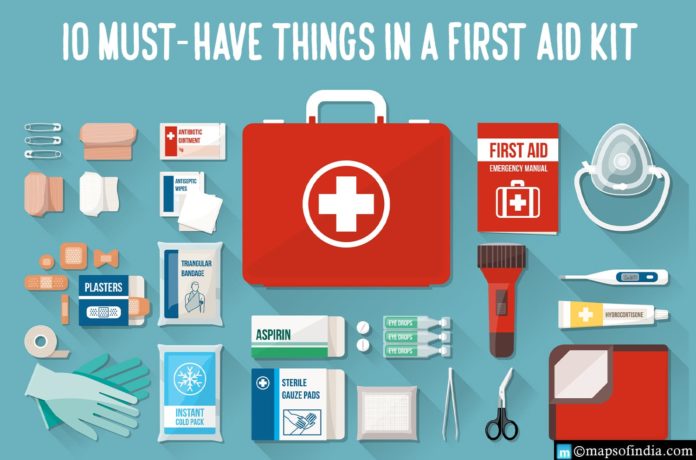From a simple scratch on a knee to getting a broken bone, one thing is certain that accidents happen. Therefore, one should always be prepared by keeping a few items in your home for instant care.
One can purchase prepackaged first aid kits but should make them better off on your own. It would help if you always carried a first aid box in your bag or a vehicle.
So what are you waiting for? Just head on to a local pharmacy shop and pick up the following items for your kit:
- First Aid Handbook
Purchase a first aid handbook and read the manual patiently and carefully to prepare yourself to handle all kinds of emergencies.
- Two Pairs of Gloves
Sterile gloves offer excellent and safe protection for the victim and the rescuer while treating the bleeding of open wounds. In addition, the gloves provide the affected area with a germ-free barrier. Always use non-latex gloves if you have a latex allergy.
- Sanitizing Agent
Antibiotic cloth or a lite antiseptic like hydrogen peroxide can help to clean and disinfect a wound.
- Adhesive Tape and Gauze
This duo of adhesive tape and gauze works best to stop the bleeding. Just apply sterile gauze on the bleeding wound, be firm and put a gentle pressure. Once the bleeding stops, you can use adhesive tape to hold the gauze. An adhesive bandage helps to keep the wound away from the dirt.
- Antibiotic Ointment
After cleaning the wound, use antibiotic ointment because it helps to defend the wound against infection. It also helps to speed up the healing process and reduces the scars.
- Scissors and Tweezers
The round-edged scissors helps to protect the victim from further injury. Use the shears to tear the tape and use the gauze to remove clothing if needed. The tweezers are used for removing particulate debris, dirt, and splinters. But remember not to use the tweezers to remove a sting bite of an insect because it can end up pushing more venom into your skin. For such types of cases, brush that injured area with the edge of the card and a piece of iron or key.
- Elastic Wraps
You can use elastic wraps to stabilize the elbow, wrists, ankle, and knee injuries. It also helps to reduce swelling.
- Triangular Bandages
Triangular bandages are large and can wrap wounds, especially as slings for broken bones or dislocated arms and shoulders. Don’t forget to carry safety pins because that helps keep the bandages in place.
- Pain Relievers
Painkillers like Ibuprofen, acetaminophen and aspirin are all helpful in soothing minor pains and aches. With doctors’ approval, it’s a good idea to keep one strip of aspirin tablets in a bag in case of a heart attack. Don’t give aspirin tablets to children, and don’t use them without any cause. Always check the expiration dates of all medications before using them.
- Ice Packs
Use an instant ice pack immediately to treat burns and various injuries like muscle crack, fracture, insect stings, sprains, and strains.
- Emergency Phone Numbers
You can mark the contact numbers of your family members on mobile, which will get highlighted on the top in case of an emergency. For example, dial 112 immediately if you see an accident victim. It would help if you kept all kinds of emergency numbers on your cell phone.




